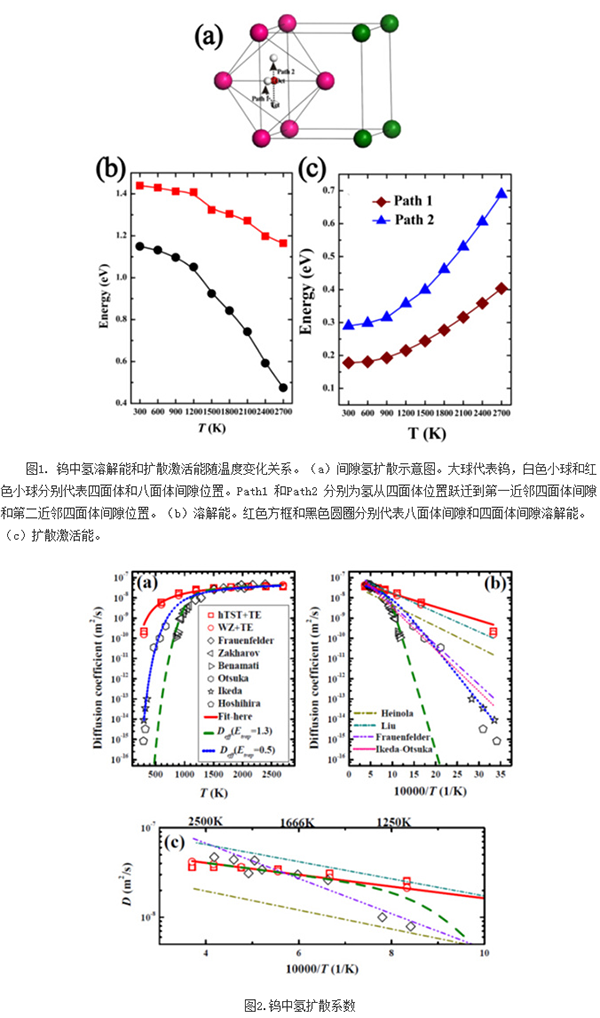Research Institute of Hefei Research Institute for the Dissolution and Diffusion of Hydrogen in Plasma for Tungsten

Recently, researchers from the Institute of Solid State Physics at the Chinese Academy of Sciences' Hefei Institute of Materials Science and Technology collaborated with researchers from the Institute of Plasma Physics to make new progress in the study of hydrogen dissolution and diffusion in plasma-oriented tungsten materials. Related scientific research results were published in the “Materialsâ€. Acta Materialia 84 (426-435, 2015).
Tungsten has the advantages of high melting point, good anti-neutron irradiation and anti-sputter corrosion, and was selected as the plasma material facing the International Thermonuclear Experimental Reactor (ITER). As a plasma-facing material, it will be bombarded with high-energy and high-throughput hydrogen isotope plasmas during operation. These hydrogen isotope plasmas penetrate the surface of the material, diffuse into the interior of the material and retain it, which in turn changes the mechanical properties of the material, such as induced vacancy generation, hydrogen embrittlement, and reduced mechanical strength. In addition, neodymium is expensive and radioactive, and trapping in large amounts in plasma-facing materials can also result in the loss of fuel and potential radiological hazards to the surrounding environment. Therefore, it is necessary to study the retention behavior of hydrogen isotopes in tungsten.
Solubility and diffusion coefficient are the most basic physical parameters for understanding the nature of hydrogen isotope retention, but so far, the relevant research data is very scarce and there are large differences. Recently, scientists at the Solid Research Institute of Hefei Research Institute have studied the diffusion and dissolution properties of hydrogen using the first-principles method, and investigated the influence of temperature on them using quasi-harmonic approximation methods. The study found that temperature can not change the optimal position and optimal diffusion path of hydrogen in tungsten, but it will significantly affect the dissolved energy and diffusion activation energy (Fig. 1).
As the temperature increases, the hydrogen dissolution energy gradually decreases and the diffusion activation energy gradually increases. Based on the first-principles calculation results, the solubility and diffusion coefficients of hydrogen in 300-2700K were calculated using Sievert's law and transition state theory. The calculated results are consistent with the experimental data in the high temperature range (greater than 1500K), and there is a large difference between the experimental data and the low temperature range. Differences in the low temperature range can be explained by defect capture effects (Figure 2). At the same time, researchers found that the first-principles results of temperature correction are more in line with the experimental data than the first-principles calculations without temperature correction. This shows that in the first-principles study of hydrogen retention properties, the temperature correction of the calculated data is required.
The above research work was supported by the ITER project of the Ministry of Science and Technology, the National Natural Science Foundation of China, and the Chinese Academy of Sciences.
Sisal Wheel,Sisal Polishing Buffing Wheel,Sisal Polishing Wheel,Stitched Sisal Buff
Jiangmen Gude Polishing Equipment Co., Ltd , https://www.kokipolishing.com